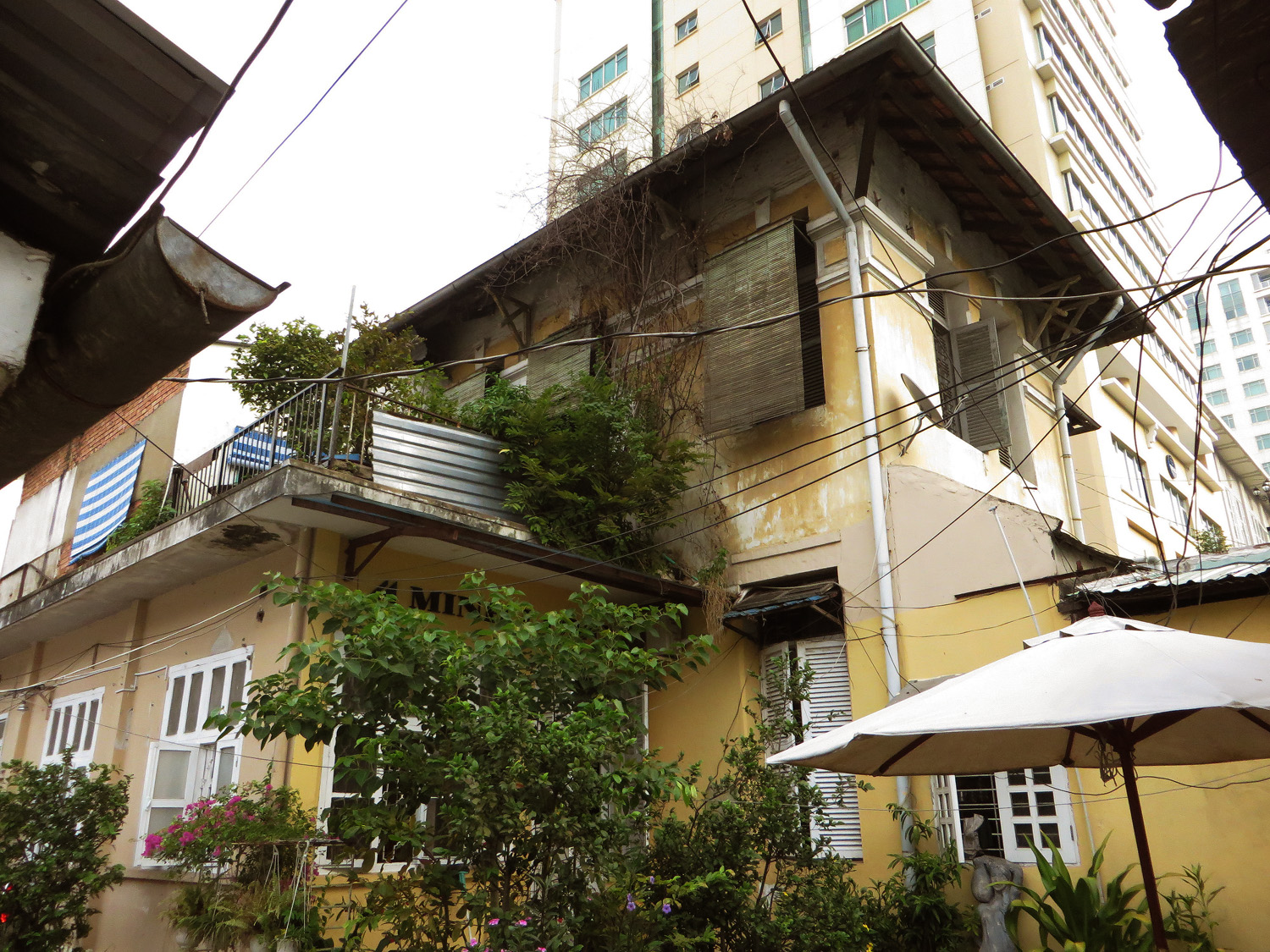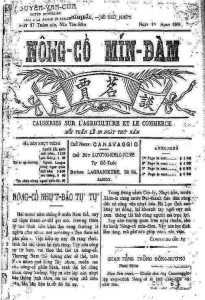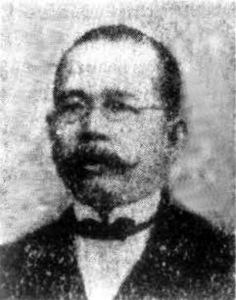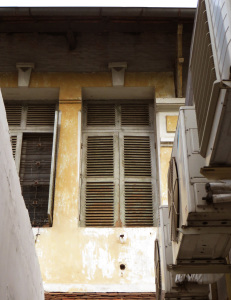
The former Canavaggio villa at 128 Nguyễn Thị Minh Khai
This article was published previously in Saigoneer http://saigoneer.com
In the early 20th century, the colonial villa at 128 Nguyễn Thị Minh Khai (the former rue Chasseloup-Laubat) was home to one of Saigon’s best-known Corsican families, the Canavaggios.

The newspaper Nông cổ mín đàm (Matters of Agriculture, 1901-1924), founded by François Canavaggio
Canavaggio family members were amongst the first colonial settlers who arrived in the service of the French armed forces in 1859. Of these, the most successful was François Canavaggio, whose subsequent business activities enabled him to acquire a large plantation at Xuân Vinh, near Thủ Đức. By 1907, he was Vice President of the Cochinchina Chamber of Agriculture and a member of the Colonial Council of Cochinchina. It was François Canavaggio who acquired the villa at 128 rue Chasseloup-Laubat.
As Philippe Peycam has shown in his book The Birth of Vietnamese Political Journalism: Saigon, 1916-1930, François Canavaggio founded the first quốc ngữ (Vietnamese-language) business newspaper Nông cổ mín đàm (Matters of Agriculture, 1901-1924), which aimed to “expand the agricultural and industrial knowledge of the Annamite people.”

Gilbert Trần Chánh Chiếu (1868-1919), first editor of Nông cổ mín đàm
The paper’s first editor-in-chief was Vietnamese businessman, attorney at law and independence activist Gilbert Trần Chánh Chiếu (1868-1919), who – with the blessing of the liberally-minded Canavaggio – published a series of increasingly anti-colonial articles from 1907 until his arrest in 1908 as an agent of the Duy Tân movement. Thereafter, the newspaper came under much stricter government observation and control.
After Canavaggio’s death in 1922, ownership of Nông cổ mín đàm passed to his Vietnamese widow, but two years later it was closed down by the colonial authorities following a series of outspoken articles on the Saigon port monopoly scandal.
François Canavaggio had several sons, including Marie-Ange who practiced law in Cần Thơ and Jules who served as a Catholic priest in Thủ Đức.

Another view of the former Canavaggio villa at 128 Nguyễn Thị Minh Khai
However, perhaps his best-known offspring was Paul-François Canavaggio, who owned a large rubber plantation at Long Chiêu near Thủ Dầu Một and opened stores in both Phnom Penh and Saigon. In the 1920s and 1930s, his Saigon store (initially at 118-120 rue Catinat, but later at 173-175 rue Catinat) was one of the city’s leading suppliers of men’s hats, shirts, hosiery and footwear.
Sadly for this member of the Canavaggio family, having survived the economic crash relatively unscathed, he went bankrupt in 1935 and was forced to sell up and leave Indochina.
The old Canavaggio villa is one of several old buildings currently hidden behind ugly hoardings on Nguyễn Thị Minh Khai street, opposite the former Cercle Sportif Saïgonnais.

The former Canavaggio villa at 128 Nguyễn Thị Minh Khai, hidden behind shophouse buildings
Tim Doling is the author of the guidebook Exploring Saigon-Chợ Lớn – Vanishing heritage of Hồ Chí Minh City (Nhà Xuất Bản Thế Giới, Hà Nội, 2019)
A full index of all Tim’s blog articles since November 2013 is now available here.
Join the Facebook group pages Saigon-Chợ Lớn Then & Now to see historic photographs juxtaposed with new ones taken in the same locations, and Đài Quan sát Di sản Sài Gòn – Saigon Heritage Observatory for up-to-date information on conservation issues in Saigon and Chợ Lớn.

